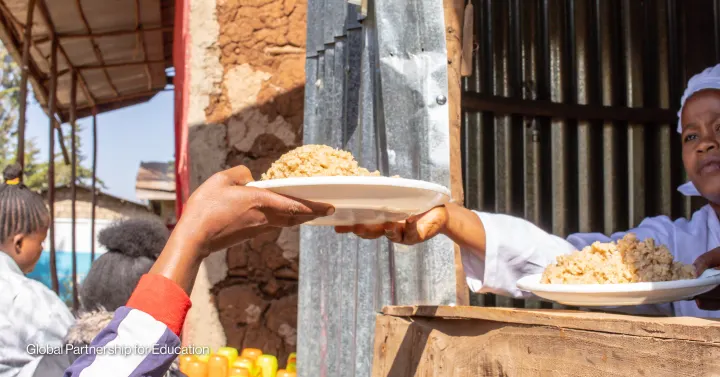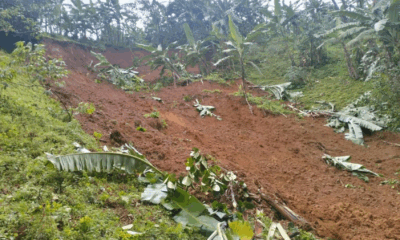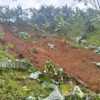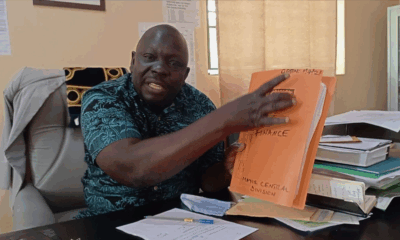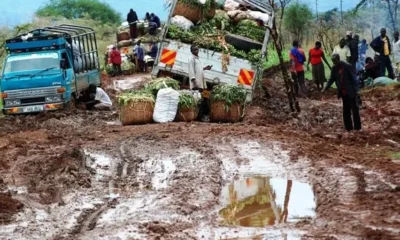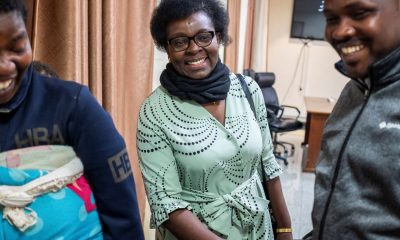Opinions
Sara Farley: What We Feed Our Children Can Fix Our Planet
By connecting climate-resilient farming to school meal programs, governments can create jobs, boost nutrition, and build food systems that serve farmers, nourish families, and heal the planet.
This is one of the most volatile moments in history to be a farmer. That’s especially true if you are a smallholder and even more so if you live in a climate-vulnerable country. Dramatic economic shifts are driving up food costs, while extreme weather destroys crops and devastates farmers’ livelihoods.
A 1 degree Celsius rise in temperature means we lower the amount we can feed everyone on the planet by 120 calories a day. Global warming is not only shrinking our food supply, but also eroding our health, threatening our children’s futures, and destabilizing societies.
Simultaneously, cuts to international aid and a tightening fiscal space are gutting progress in innovation and last-mile support to the most vulnerable people.
But amid the setbacks, there is a case for optimism: Solutions abound that are sustainable, nourishing, and equitable, and they are community-led and often government-owned. And one solution is hiding in plain sight: What and how we feed our children.
School meals are one of the most powerful safety nets we have for child health and education; they are also an untapped lever for transforming our food systems if they are designed with a twin emphasis on farmers and on the children who eat the food they grow.
As leaders arrive in Ethiopia’s capital, Addis Ababa, next week for the U.N. Food Systems Summit Stocktaking moment, we need to direct focus toward effective policies that link incentives for farmers to adopt climate-resilient agricultural practices to school meal programs.
The result is tantalizing: simultaneous achievement of multiple development outcomes such as job creation, nutrition of our most vulnerable people, farmer well-being, and increased resilience to the kinds of extreme weather events and environmental changes imperilling food security in the future.
For farmers unsure about the incentives entailed in making the transition to climate resilient agricultural production, a guaranteed market can make the difference. Over 70% of school feeding budget typically comes from government sources — but often these resources are focused on getting calories on the plate, such as with imported, refined white rice. We are missing a crucial opportunity to use those dollars for more nutritious meals. These would mean locally grown, by farmers adopting regenerative practices — those that build soil health, reduce water usage, resist erosion, and build back biodiversity, while helping farmers to thrive.
By shifting procurement to incentivize these components, governments can create jobs and advance on climate commitments while fulfilling policy commitments to support agricultural producers and boost nutrition for the next generation.
When governments open guaranteed, reliable markets for school meal programs, they give farmers the security to plan ahead, learn new practices, and invest in building resilient food systems from the ground up. Public procurement can make growing diverse, regenerative crops — an otherwise risky proposition given transition timelines that sometimes coincide with dips in yield — into bankable opportunities.
Brazil offers a compelling blueprint. Its national school feeding program has linked public procurement with regenerative agriculture in truly transformative ways. Brazil has mandated that at least 30% of school meal ingredients come from smallholder family farms. They also allow schools to pay up to 30% more for food grown using agroecological methods, which include regenerative practices, and they respect local food cultures and geographic proximity in sourcing.
In São Paulo, the ambition is even greater. The city is targeting 100% of school meals to come from agroecological production. These policies have not only improved school meal quality and access — they’ve also funnelled public money directly into sustainable rural livelihoods, proving that ecological renewal and child nutrition can go hand-in-hand.
This approach hits three targets with one effort:
First, it supports local economies. Every $1 spent on local school feeding can generate $2–$3 in community income.
Second, it addresses climate change. The global food system accounts for roughly one-third of greenhouse gas emissions. Regenerative farming, including agroforestry and other approaches, can sequester up to nine gigatons of carbon dioxide annually if scaled globally.
Third, it improves nutrition and human capital. Healthy meals improve cognitive development, school attendance, and long-term well-being, resulting in stronger job seekers and job creators.
Much of this progress in Brazil is due to political will, prioritization, participatory governance, and values embedded in the Constitution. Brazil’s national school feeding policy, Programa Nacional de Alimentação Escolar, or PNAE, made school meals a constitutional right in 2009 and intentionally linked it to the U.N.’s Sustainable Development Goals.
Civil society and Brazil’s social movements, especially the Landless Workers’ Movement, or MST, and peasant organizations under Via Campesina, played a critical role as well. They campaigned for land reform, food sovereignty, and the recognition of family farmers as central groups in Brazil’s food system. Their activism helped push family farming into the political mainstream and framed it as a solution to rural poverty, inequality, and environmental degradation and a preferred constituency for sourcing school meals. In the years since the cross-sectoral process that led to the PNAE law’s creation in 2009 has also informed its evolution — along with a participatory governance structure and complementary legislation for agroecology.
Across the Pacific, we also see inspiration in South Korea. South Korea’s universal free, eco-friendly, or UFEF, school lunch program provides high-quality, freshly prepared school meals at no cost to 6.3 million students from kindergarten to high school. Beginning in the early 2000s, South Korea began a nationwide transition away from a means-tested school lunch program in which only low-income students received free meals. At the same time, South Korea, similar to Brazil, introduced policies to help revitalize farming communities by connecting and rebuilding urban-rural linkages through local and regional school food systems.
South Korea’s school meals are a case study in how to marry nutrition with ecological ambition. At the heart of the initiative is a mandate: schools must source a growing share of ingredients from certified eco-friendly producers, similar to Brazil. This has increased demand for regenerative farming, rewarded smallholder producers, and cut down on harmful chemicals in both soil and stomach. The policy doesn’t just feed children — it feeds a whole sector of green innovation, supported by targeted subsidies and direct payments to sustainable farms. The UFEF policy has yielded other significant benefits, including strong economic returns on investment and improvements in academic performance, public health, and farmer livelihoods.
South Korea’s farm-to-school playbook offers four lessons for policymakers hungry for climate-smart reform and dividends beyond the lunch tray.
First, build a credible green certification system — not strictly organic necessarily, but one that nudges farmers toward regenerative practices with the right mix of incentives.
Second, lock in demand with reliable procurement pipelines — contract farming tied to public programs keeps eco-friendly produce moving from field to fork.
Third, give small farmers a break: invest in local processing hubs so they aren’t stuck peeling, chopping, or packaging alone.
And fourth, don’t forget the kitchen — robust culinary infrastructure and skilled cooks are essential to make the most of seasonal harvests and agrobiodiversity. Without the stovetops, the system stalls.
As delegates descend on Addis Ababa for the U.N. Food Systems Summit Stocktake, or UNFSS+4, it’s time to take a note from Brazil and South Korea and move away from silos toward comprehensive approaches. Food, health, climate, equity, and the economy are not separate challenges — they are one tangled problem with a common solution.
Ministries of agriculture, health, education, and environment must stop working at cross purposes and start rowing in the same direction. Development banks and donors, meanwhile, should back countries with financing that fits local ambitions, not donor templates. This takes political will, but it also takes shared national values and vision for the future of what agriculture, nutrition, poverty, jobs, and education can look like in a specific country. At The Rockefeller Foundation, we’re working with partners to explore how to innovate and deploy financial instruments that simultaneously boost the credit worthiness of countries while fueling the regenerative transition and expansion of school meal programs.
To truly transform our food systems and build a more resilient future, the development community must act with urgency, passion, and unity. This means investing in solutions that connect supply with demand, especially for underserved and marginalized farmers, while incentivizing climate-resilient agricultural practices.
It also requires sustained support for research that identifies what’s working — so we can scale effective, evidence-based approaches that protect the most vulnerable — our farmers and our children. And above all, we must work across sectors and silos to drive inclusive, integrated solutions that leave no one behind — not people, and not our planet.
The ultimate goal? Build food systems that serve farmers, nourish families, and heal the planet.
The Author, Sara Farley, leads the global portfolio for The Rockefeller Foundation’s food team and is driving the foundation’s inaugural regenerative/agroecological strategy as co-lead of its $100 million Big Bet on Regenerative School Meals.
Comments



